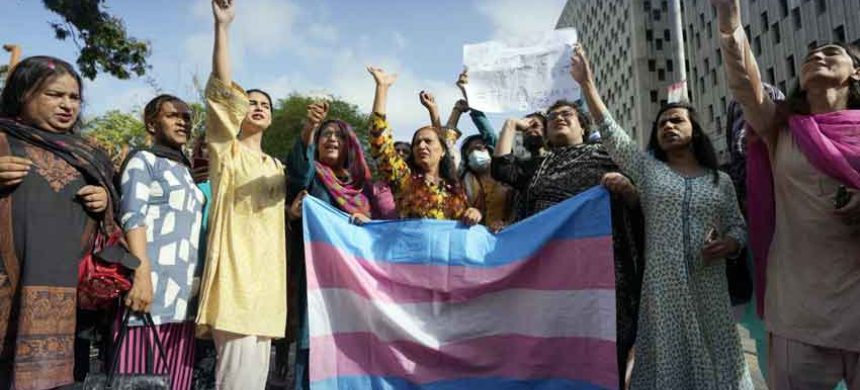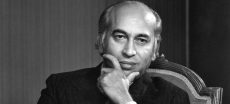In Pakistan, the constitutional promise of equality starkly contrasts with the harsh realities faced by intersex individuals, who suffer from systemic neglect and discrimination. Despite legal frameworks intended to protect all citizens, these often fail to recognize the specific vulnerabilities of the intersex community, leaving them exposed to societal stigma and medical exploitation.
Intersex individuals frequently encounter marginalization due to prevailing societal norms that define what is considered “normal.” They are often mischaracterized as disabled—not due to any inherent impairments but because their differences challenge societal expectations. Article 25 of the Constitution guarantees equality, yet it does not extend substantive protections to intersex individuals in the same way it does for women and children, resulting in their vulnerability.
Although there are laws aimed at protecting citizens, such as the Transgender Persons Act of 2018, they do not adequately address the unique challenges faced by intersex individuals. The act’s terminology broadly encompasses transgender persons but fails to focus on intersex issues, thus neglecting the community’s specific needs.
Intersex individuals in Pakistan face significant healthcare challenges stemming from societal stigmatization, inadequate legal protections, and a lack of specialized medical facilities. Despite the protections offered by the 2018 act, there are no dedicated gender health clinics, and many medical professionals lack training in intersex health issues. This gap often leads to inappropriate treatments, including non-consensual cosmetic surgeries aimed at conforming intersex individuals to binary gender norms—actions that the United Nations considers human rights violations.
Addressing these challenges necessitates reform in medical education, heightened empathy and awareness among healthcare providers, and the establishment of specialized services for intersex health. The film XXY, an Argentinean narrative, poignantly explores the life of Alex, a 15-year-old intersex teenager, and underscores the bullying and stigmatization that resonate with the experiences of intersex individuals in Pakistan.
In Pakistani society, derogatory language such as “chhakka” and “khusra” reinforces negative stereotypes and shapes public perception of disability. Effective policy responses must ensure accurate and respectful representation of the intersex community in media, both print and visual.
While the Transgender Persons Act mandates free education for transgender and intersex children, its effectiveness is undermined without comprehensive anti-bullying and anti-rape policies. Intersex children frequently experience violence and sexual misconduct, leading to high dropout rates and barriers to education and social integration.
The concept of intersectionality is essential in understanding the intersex community’s plight. Intersex individuals are born with physical traits that do not align with typical male or female definitions, while transgender individuals identify differently from their assigned sex at birth. Grouping intersex individuals under the transgender umbrella diminishes their unique identity and experiences, further perpetuating their marginalization.
Activists and scholars have developed various models to highlight how societal roles perpetuate gender discrimination. One significant framework is the “Social Model of Disability,” which asserts that societal discrimination, rather than inherent impairments, constructs disability. For instance, intersex individuals may not have physical impairments, yet societal norms often render them incapable of fulfilling roles defined for males or females.
In the documentary Pakistani Transgenders: The Open Secret, Maggie, an educated transgender woman, shares her aspiration to be an air hostess but faces societal barriers that force her into prostitution. This example illustrates how constructs of “normalcy” limit opportunities for both intersex and transgender individuals.
Moreover, instances of sexual violence against intersex individuals in Pakistan are rarely documented. Maggie’s experience of gang rape, where police dismissed her plea for help, highlights the urgent need for legal protections specifically addressing intersex and transgender issues.
Anjum’s character in Arundhati Roy’s The Ministry of Utmost Happiness serves as a powerful commentary on the absence of intersex rights and inclusivity in Asian culture. Anjum’s journey, initially as Aftab—a child with ambiguous physical characteristics—exemplifies the societal stigma and family confusion surrounding intersex identities.
Many intersex individuals struggle to obtain identity documents that reflect their gender accurately, hindering access to essential rights and services. In 2012, the Supreme Court recognized the rights of the intersex community as equal citizens, yet the implementation of this ruling remains lacking. The ongoing refusal of NADRA officials to issue identity cards to intersex individuals illustrates this failure.
Understanding gender as a cultural identity with historical context is crucial. This perspective underscores the necessity of including gender minorities as experts in their own lives and experiences. The absence of intersex individuals in legislative processes indicates a dire need for their inclusion as active, engaged citizens rather than marginalized outcasts.
In conclusion, intersex individuals in Pakistan encounter significant challenges due to societal constructs and legal shortcomings. Addressing these issues requires a comprehensive approach that amplifies the voices of the intersex community and ensures substantive equality, ultimately fostering a more inclusive society.











